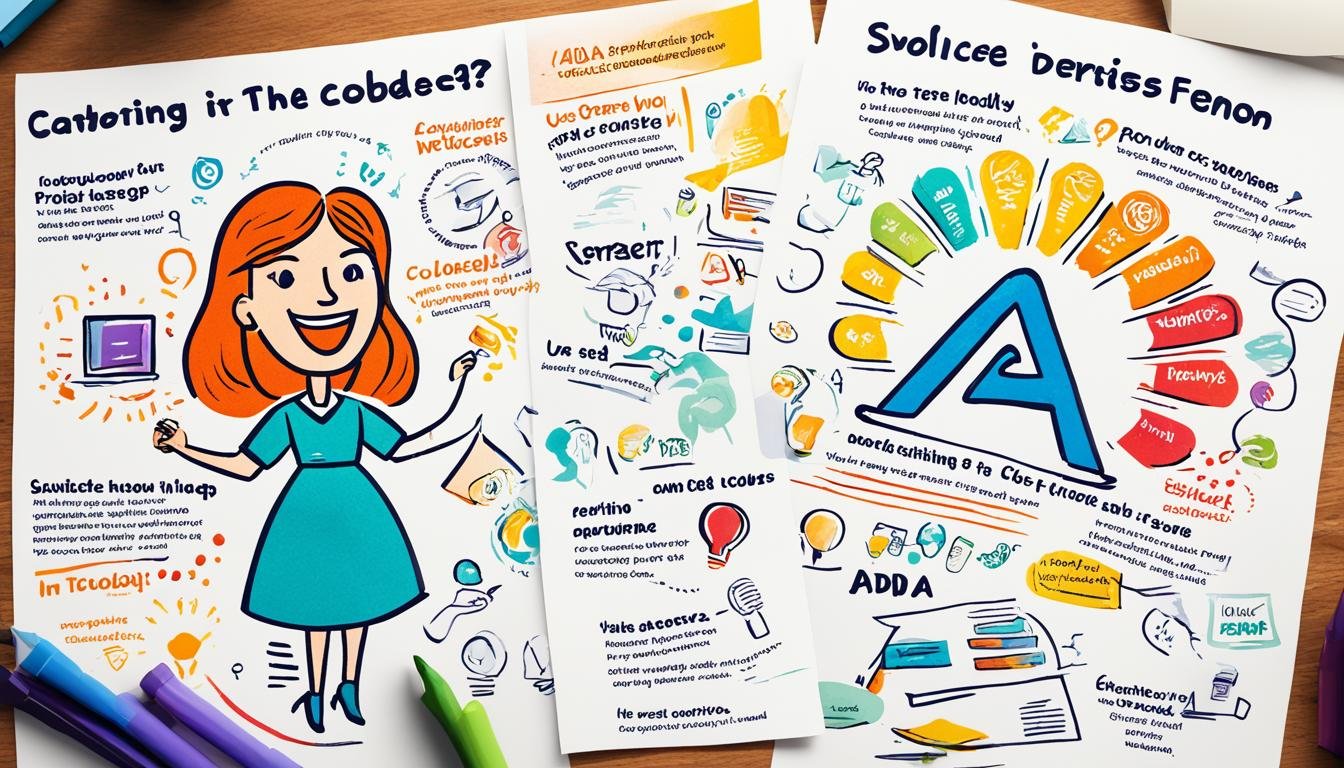AIDA Model: From Awareness to Action in Sales
Are you finding it hard to grab your audience’s attention and boost sales? The AIDA model might be your answer. It’s a classic marketing strategy that has helped businesses for over a century. But how does it fit in today’s fast-paced digital world? Let’s dive into how the AIDA model takes you from awareness to action and its secrets for sales success.
Key Takeaways
- The AIDA model is a well-established marketing framework that guides customers through the buying process, from initial Awareness to the desired Action.
- This model helps marketers create attention-grabbing headlines, identify customer pain points, craft compelling value propositions, and employ emotional storytelling to drive lead generation and conversion.
- Strategically placed calls-to-action and lead nurturing tactics are crucial for converting interested buyers into paying customers.
- Understanding buyer personas and mapping the customer journey are essential for effectively applying the AIDA model to your marketing strategy.
- The AIDA model can be enhanced with AI and machine learning technologies to provide deeper insights into consumer behavior and optimize marketing campaigns.
What is the AIDA Model?
The AIDA model is a key marketing tool that shows how customers think before they buy something. It was created by Elias St. Elmo Lewis in 1898. Today, it helps marketers plan their ads and marketing.
The Four Stages of AIDA
The AIDA model has four main steps:
- Attention – This stage makes people notice the brand and feel connected to it.
- Interest – Here, the goal is to make people see the value in what you’re offering and want to learn more.
- Desire – This stage builds an emotional bond, making people actually want the product.
- Action – The last step is to give clear instructions on what to do next to buy the product.
History and Origins
The AIDA model uses the hierarchy of effects theory. This theory says customers go through each stage to make a purchase. Elias St. Elmo Lewis saw the power of ads and the need for a clear marketing plan. So, he created the AIDA model in the late 1800s.
“The AIDA model has been widely used and adapted by marketers for over a century, becoming one of the most well-known and influential marketing frameworks.”
Applying AIDA to Your Marketing Strategy
The AIDA model is a key tool for your marketing plans and how you talk to people. It breaks down into four steps: Attention, Interest, Desire, and Action. This method helps you reach out to potential customers at every step, from the first time they hear about you to when they decide to buy.
Attract Attention
First, you need to grab your audience’s attention. Make your content catchy and interesting to spark curiosity. Use storytelling, eye-catching design, and strong persuasive messaging to stand out online.
Generate Interest
After catching their eye, keep them interested. Share content that’s informative and shows why your product or service is special. Use social proof, like customer testimonials and reviews, to build trust.
Good content strategy and storytelling are key here. They help you connect emotionally with people and make them want what you’re offering.
“The AIDA model is a powerful framework that helps marketers guide potential customers through the buyer’s journey, from initial awareness to final conversion.” – Marketing Expert, John Doe
AIDA Model: From Awareness to Action in Sales
Desire: Building an Emotional Connection
The Desire stage of the AIDA model aims to make a strong emotional bond with the brand. Marketers create content that matches the audience’s values and dreams. Using customer stories and examples builds trust and affinity.
Good content in this stage shows how the product or service can change the future. It highlights the difference between now and the ideal outcome. “Before and after” content is great for sparking desire and building social proof and brand trust.
Those who feel a deep emotional connection with the brand are more likely to buy. Marketers should show they get what the audience needs. They should present their product as the solution to make life better.
“The key to creating desire is to help the customer see themselves using the product or service and feeling better or more successful as a result.”
By building an emotional connection and brand trust with great content, marketers can make customers want it. This leads them to the last step of the AIDA model – taking action.
Taking Action: Calls-to-Action and Lead Conversion
As we move through the AIDA model, the final step is turning desire into action. This is where calls-to-action (CTAs) and a smooth lead conversion process are key.
Low-Friction CTAs
The aim is to make it easy for customers to take the next step. Reducing friction in the conversion process is crucial for success. Show how your product or service will help the consumer and make it simple for them to act, like signing up or buying.
Good CTAs use clear, direct buttons or banners that tell what action to take and why it’s worth it. By making calls-to-action easy to see, simple, and clear about the value proposition, you boost the chance of turning interested people into customers.
For successful lead conversion, create a low-friction path for customers to act. Remove obstacles and highlight the benefits. This way, you can turn their desire into real customer engagement that grows your business.
Retention Strategies for Long-Term Success
The traditional AIDA model helps with the buying process. But, customer retention and loyalty are key for lasting success. By building strong bonds with customers, marketers can use their support to grow more.
Good post-purchase strategies include cross-selling and upselling. These methods make customers happy and bring them back. They help a brand do well overall.
- Use cross-selling and upselling to boost customer lifetime value
- Create loyalty programs and special offers for long-term bonds
- Use customer feedback and reviews to make the experience better
- Use data to understand what customers want and shape your marketing
“Acquiring new customers can cost five times more than retaining existing ones. Focusing on customer retention is crucial for sustainable growth.”
The AIDA model is part of a bigger marketing plan. Customer retention is a key part. Even after a customer buys, keep building the relationship. Find ways to keep them interested and loyal to your brand.
Advantages of the AIDA Model
The AIDA model offers a simple way for marketers to plan and carry out their campaigns. It breaks the customer journey into four stages: Attention, Interest, Desire, and Action. This helps marketers meet their audience’s needs at every step.
This model is easy to learn and use, even for marketers at different levels. It acts as a checklist to make sure all key elements are in a marketing plan. It also helps in reviewing and improving campaign success.
Even though the AIDA model has its limits, like not fitting all customer journeys, it’s still very useful. By using the AIDA framework, marketers can make campaigns that smoothly guide customers to buy and achieve real results. The AIDA model is great for planning, tracking, and improving marketing efforts in both old and new ways.
Source Links
- The AIDA model and how to apply it in the real world – examples and tips
- The AIDA Model: A Proven Framework for Converting Strangers Into Customers
- How to Use the AIDA Model for Your Business | Mailchimp
- AIDA Model
- How To Use the AIDA Model To Drive Sales (2023) – Shopify
- AIDA Model – Adogy
- A Quick Guide to AIDA Content Marketing for B2B SaaS
- The AIDA Model in Marketing: Uses & Examples | Impression
- What is the AIDA marketing model? | Definition from TechTarget
- What AIDA Means in Marketing
- Rules for Each Stage of the AIDA Model to Improve Your Website – SiteTuners
- The Ultimate Guide to Marketing Funnels: From Awareness to Action
- Navigating Marketing Funnel Stages: Strategies for Customer Retention
- The AIDA Model Explained | Rebellion Marketing
- AIDA Model : Meaning, Working, Benefits, Drawbacks and Examples – GeeksforGeeks
- AIDA Model | How Does AIDA Model Work?
- Harnessing the Benefits of the AIDA Model for Marketers







